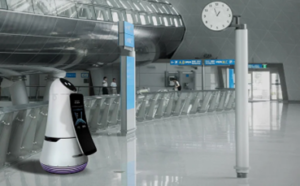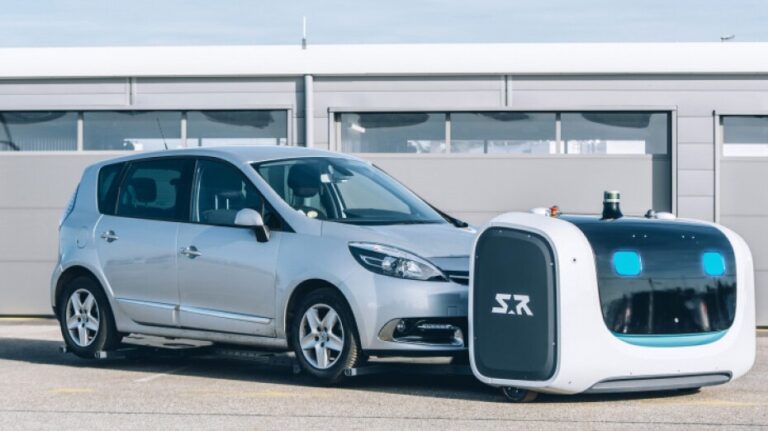
Ahead of her presentation, ‘Robot revolution: new normal at airports around the world‘, at Passenger Terminal Expo 2024 in Frankfurt, Germany, Viktoria Myroniuk, senior lecturer in aviation, program leader for MSc sustainable air transport operations and planning at the University of Salford, speaks to Passenger Terminal Today to discuss her view on the automated future of the aviation industry.
What is your presentation about?
My presentation will give an overview of different airport robots: check-in assistant robots, guide robots, bag-carrying robots, valet parking robots, waiter robots, food delivery robots, health screening robots, security robots, patrol and traffic enforcement robots, bomb disposal robots, robotic exoskeletons and baggage handling robots, cargo handling robots, cleaning and disinfectant robots, facilities maintenance robots, waste collection robots, robotic grass mowers, snow removal robots, de-icing robots, taxi bots, wildlife management robots, construction robots, etc.
The audience can expect to learn about airport robots and their main uses, functions, capabilities, advantages and disadvantages. They will be illustrated with the real-life examples of airports around the world that either use or trial robots.
Can you tell me a bit more about your research in this area?
Being a senior lecturer in aviation and a program leader for MSc sustainable air transport operations and planning at Salford University, I’m proud to be part of the School of Science, Engineering and Environment which conducts research projects in robotics. Salford University has the new North of England Robotics Innovation Centre (NERIC) which is a beacon for the university’s robotics and automation specialisms. The £16m [US$20m] facility is partly funded by the European Regional Development Fund, with additional support from Research England, and serves as a hub for small to medium-size industries (SMEs) looking to design, test and validate innovation in this rapidly growing area.
In your view, what are the most valuable robotic additions to airport operations?
Guide robots are a valuable addition to hub airports with many transfer passengers who may not speak English or local language – like LG’s robot Troika at Incheon International Airport in South Korea, and guide robot Bill by BotsAndUs at London Heathrow Airport.
Valet parking robots enable airports to use parking lots more efficiently and decrease CO2 emissions. For example, solutions like Stan robot by Stanley Robotics at Lyon-Saint-Exupéry Airport also mean passengers can save time.
The Covid-19 pandemic led to the appearance of health screening robots which ensure that airports can screen passengers without putting their employees at risk. A good example of this use case is Urumuri robot by Zora Bots at Kigali International Airport in Rwanda. The Covid-19 pandemic has also made cleaning and UV disinfectant robots like the Nilfisk robot by Carnegie Robotics at Philadelphia International Airport in Pennsylvania important for passengers’ return.
Shortages in baggage handlers have also made robotic exoskeletons and baggage handling robots important to make the role attractive to potential employees. Examples of such robots include: the Bionic Cray X exoskeleton at Stuttgart Airport in Germany; Bagload and Fleet robots by Vanderlande at Oslo Gardermoen Airport in Norway; and snow removing and de-icing robots Runway Snowbot T254 Versu by Valtra SmartTouch at Ivalo Airport in Finland.
What are the key challenges of this technology? How can these be overcome?
The key challenges are different levels of technology development depending on the main uses of airport robots, safety requirements, as well as passengers’ and employees’ perceptions of robots. These can be overcome through the cooperation of airports with robot researchers and manufacturers, by appropriate training provided to airport employees and by passenger-friendly robot designs.
How do you expect this technology to evolve over the next 10 years?
I expect that in the next 10 years, robots will be widely used at airports. In particular, they will be increasingly present: at hub airports; in countries and regions with high percentages of elderly people and a lack of personnel willing to work in physically challenging and low-paid jobs; in countries with high-security risks and high risks of epidemics of transmittable diseases; at airports with limited possibilities for airport terminal expansions and limited land resources; and at airports with severe meteorological conditions.
To hear more valuable industry insights from top aviation executives, book a conference pass for Passenger Terminal Conference, April 16-18, 2024, in Frankfurt, Germany.

